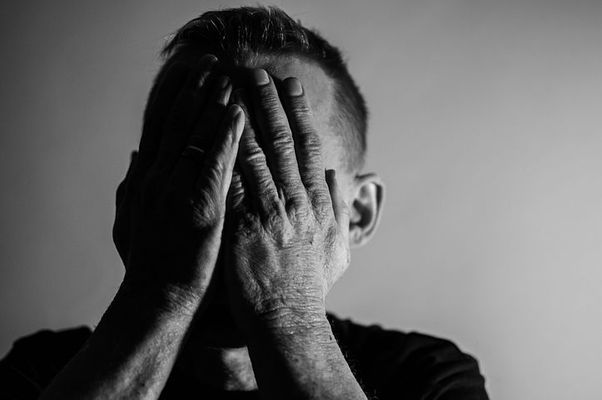10.1.1
Functionalism
Functionalism and Crime
Functionalism and Crime
Functionalists argue there are three functions of crime.


Durkheim
Durkheim
- Durkheim claimed crime is healthy for a society, therefore crime can be functional.
- If crime is regulated and managed by the relevant social institutions, it can be beneficial in maintaining the value consensus.
- Functionalists argue there are three functions of crime.


- Boundary maintenance
- Boundary maintenance
- Durkheim says when people commit crime, they are punished by the criminal justice system.
- This reminds other citizens of the value consensus which therefore strengthens its effectiveness.
- Crime creates social solidarity, a sense of togetherness, in society that serves to bind the wider community together.


2. Warning device
2. Warning device
- Durkheim argues this is when society needs to adapt and change as a result of crime.
- All change starts with deviance or in extreme cases, criminal activity.
- Individuals must be able to think differently if society wants to evolve further.
- Criminal activity can sometimes show that a current social policy has lost its function in society.


- Safety valve
- Safety valve
- Functionalist Davis suggests that a certain amount of deviant behaviour can be beneficial to the maintenance of social order.
- Davis uses the continuation of prostitution as evidence to support his claim.


Davis
Davis
- In Davis' view, the use of prostitutes can act as a ‘safety valve’ for men to release their sexual tension and frustrations without threatening their marriage.
- This therefore maintains the nuclear family.
- It is more beneficial to maintain the nuclear family in society than to stamp out prostitution.
Strain Theory
Strain Theory
Merton tried to focus on why people committed crime, rather than the functions it performed for society.


The ‘American Dream’
The ‘American Dream’
- Merton tried to focus on why people committed crime, rather than the functions it performed for society.
- Merton discusses the ‘American Dream’; the key principle of the American Dream is that everyone can achieve the cultural goal of material success through the means of hard work and determination.


Responses to strain
Responses to strain
- In unequal societies, some find achieving the cultural goal of material success fairly easy.
- However, for those individuals who can never achieve the material success they will begin to feel strain.
- When outlining ‘strain’, Merton outlines 5 possible responses that could occur.


Conformists and rebels
Conformists and rebels
- Conformists:
- Those who fail to achieve success but still believe that hard work will help them achieve the goal of material success.
- Rebels:
- Those who react badly to not achieving the cultural goal of material success and therefore abandon it all together and create new goals.


Innovators
Innovators
- Innovators:
- Those who realise that they cannot achieve material success by conforming to the conventional means of hard work.
- Instead, they create new ways to achieve wealth, which may lead to criminal activity.


Ritualists
Ritualists
- Ritualists:
- Those who cope with failure by forgetting about the cultural goal.
- They compensate for their failure by obsessing over the means and therefore work too hard and become jobsworths who don’t relate to other staff members.
- They irritate others and therefore do not progress in the workplace.


Retreatists
Retreatists
- Retreatists:
- Those who give up on the goals as they lack the self-belief to achieve them.
- They also reject the means as they are no longer relevant to them.
1Theory & Methods
1.1Sociological Theories
1.2Sociological Methods
2Education with Methods in Context
2.1Role & Function of the Education System
2.2Educational Achievement
2.3Relationships & Processes Within Schools
3Option 1: Culture & Identity
3.1Conceptions of Culture
3.2Identity & Socialisation
3.3Social Identity
3.4Production, Consumption & Globalisation
4Option 1: Families & Households
4.1Families & Households
4.2Changing Patterns
4.3The Symmetrical Family
4.4Children & Childhood
5Option 1: Health
5.1Social Constructions
5.2Social Distribution of Healthcare
5.3Provision & Access to Healthcare
5.4Mental Health
6Option 1: Work, Poverty & Welfare
6.1Poverty & Wealth
7Option 2: Beliefs in Society
7.1Ideology, Science & Religion
7.2Religious Movements
7.3Society & Religion
8Option 2: Global Development
8.1Development, Underdevelopment & Global Inequality
8.2Globalisation & Global Organisations
8.3Aid, Trade, Industrialisation, Urbanisation
9Option 2: The Media
9.1Contemporary Media
9.2Media Representations
10Crime & Deviance
10.1Crime & Society
10.2Social Distribution of Crime
Jump to other topics
1Theory & Methods
1.1Sociological Theories
1.2Sociological Methods
2Education with Methods in Context
2.1Role & Function of the Education System
2.2Educational Achievement
2.3Relationships & Processes Within Schools
3Option 1: Culture & Identity
3.1Conceptions of Culture
3.2Identity & Socialisation
3.3Social Identity
3.4Production, Consumption & Globalisation
4Option 1: Families & Households
4.1Families & Households
4.2Changing Patterns
4.3The Symmetrical Family
4.4Children & Childhood
5Option 1: Health
5.1Social Constructions
5.2Social Distribution of Healthcare
5.3Provision & Access to Healthcare
5.4Mental Health
6Option 1: Work, Poverty & Welfare
6.1Poverty & Wealth
7Option 2: Beliefs in Society
7.1Ideology, Science & Religion
7.2Religious Movements
7.3Society & Religion
8Option 2: Global Development
8.1Development, Underdevelopment & Global Inequality
8.2Globalisation & Global Organisations
8.3Aid, Trade, Industrialisation, Urbanisation
9Option 2: The Media
9.1Contemporary Media
9.2Media Representations
10Crime & Deviance
10.1Crime & Society
10.2Social Distribution of Crime
Unlock your full potential with Seneca Premium
Unlimited access to 10,000+ open-ended exam questions
Mini-mock exams based on your study history
Unlock 800+ premium courses & e-books